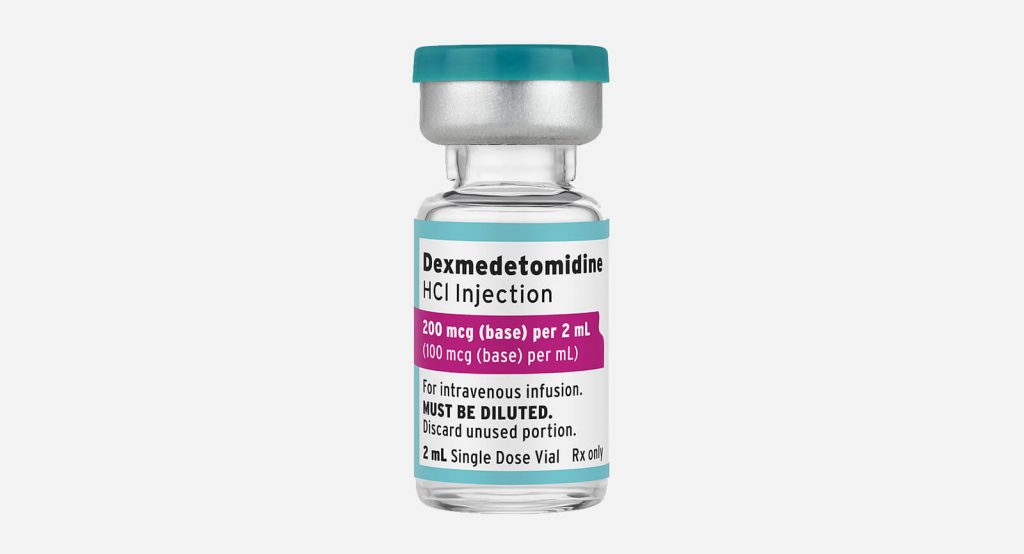Dexmedetomidine During Noninvasive Ventilation: Dr. Shein from Rainbow Babies and Children’s Hospital Cleveland, OH Comments

Vapotherm’s Hi-VNI® Technology is a tool for treating respiratory distress in patients for whom prescribers desire to add heat and moisture to breathing gases. This webpage contains links to third party abstracts and/or publications that describe certain outcomes in relation to the use of Vapotherm’s Hi-VNI® Technology, but individual results may vary. Practitioners should refer to the full indications for use and operating instructions of any products referenced herein before prescribing them.
In April 2018, Steven Shein, MD from Rainbow Babies and Children’s Hospital Cleveland, OH’s Division of Pediatric Critical Care Medicine, Department of Pediatrics, published an editorial in in Pediatric Critical Care Medicine titled “Dexmedetomidine During Noninvasive Ventilation: Different Acuity, Different Risks?.” Dexmedetomidine is a common sedative given to pediatric patients to help them tolerate noninvasive positive pressure ventilation (NIPPV) which side effects include bradycardia, oversedation, withdrawal, as well as a spike in blood pressure followed by a longer decrease. Shein writes that although small prospective trials of the drug on children on mechanical ventilation (MV) have found that interventions for these side effects are rarely needed, patients on NIPPV may be affected differently by dexmedetomidine.11. Shein, Steven, L., MD. Dexmedetomidine During Noninvasive Ventilation: Different Acuity, Different Risks? Pediatric Critical Care Medicine: April 2018 – Volume 19 – Issue 4 – p 373–375 doi: 10.1097/PCC.0000000000001453.Read Full Text
Pediatric Patients on MV vs NIPPV
Dr. Shein cites previous studies from Nationwide Children’s Hospital which found that rates of dose reduction and fluid boluses were higher than the dexmedetomidine on MV patients suggest. Additionally, they found in these prior studies that bradycardia and hypotension were common and modest, but still requiring intervention. Shein reasons that the prevalence of bradycardia in NIPPV patients receiving dexmedetomidine may be that unlike the MV patients, they are not as sick and so may not have stimuli for increased heart rate, “like hypovolemia, anemia, inflammation, or increased endogenous catecholamines.”
Adverse Effects Tolerance
Even while pointing out the limitations of the studies that provide the currently available data and calling for further study, Shein states that the evidence indicates that the negative effects of dexmedetomidine for pediatric patients on NIPPV may be well tolerated.
What About Alternatives to NIPPV?
The wider impetus for this editorial is partly that “NIV is being used with increasing frequency, and that children may require modest sedation to tolerate this support …” Although alternatives to NIPPV are beyond the scope of Shein’s editorial, it is worth noting here that Hi-VNI Technology® is a viable alternative to NIPPV. 2,32. Doshi P, Whittle JS, Bublewicz M, et al. High-Velocity Nasal Insufflation in the Treatment of Respiratory Failure: A Randomized Clinical Trial. Ann Emerg Med 2018;72:73-83 e5.Read Full Text3. Lavizarri A, Colnaghi M, Ciuffini F, Veneroni C, Musumeci S, Cortinovis I, Mosca F. Heated, humidified high-flow nasal cannula vs nasal continuous positive airway pressure for respiratory distress syndrome of prematurity – a randomized clinical noninferiority trial. JAMA Pediatr. 2016.1243.Read Full Text Additionally, its mask-free interface may be easier to tolerate than traditional NIPPV.22. Doshi P, Whittle JS, Bublewicz M, et al. High-Velocity Nasal Insufflation in the Treatment of Respiratory Failure: A Randomized Clinical Trial. Ann Emerg Med 2018;72:73-83 e5.Read Full Text
References